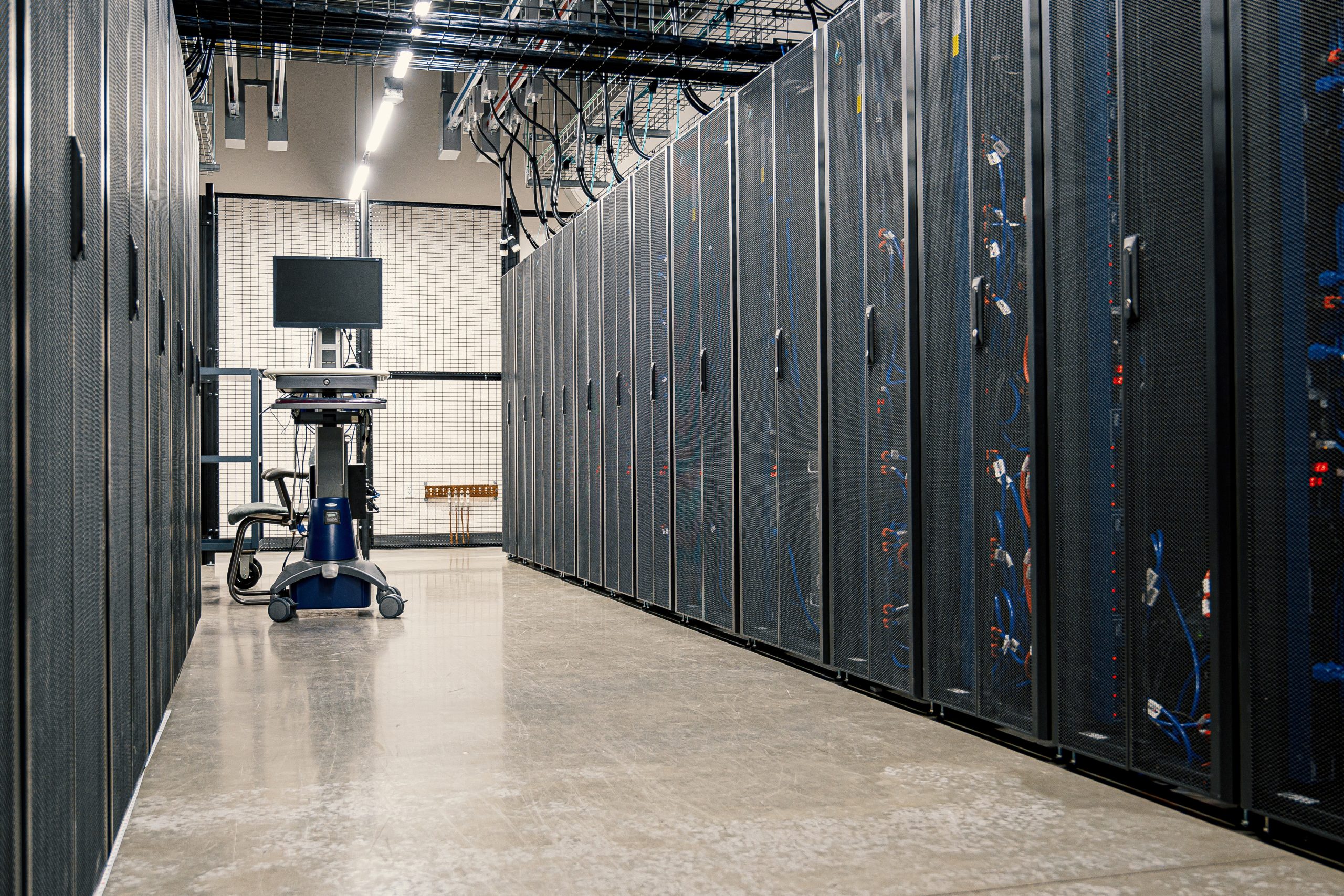
Direct Free Cooling and Adiabatic Free Cooling. What is the best solution for keeping your company’s technical rooms cool?
The free cooling system, better known as “Direct Free Cooling“, is an advanced and environmentally friendly solution for keeping technical rooms such as data centres and TLC rooms cool.
It works by introducing a quantity of filtered air from outside at a lower temperature into a room containing heat dissipating equipment. At the same time, the internal heat is dissipated and expelled from the room.
In practice, using the outside air during the cooler hours can make a valuable contribution to the cooling of the room. During the night hours of the summer, when the outside temperature is usually below 18°C, fresh outside air is introduced into the room, replacing the warm indoor air.
Direct free cooling is certainly the least expensive way of cooling rooms, both in terms of energy and pollution savings and in terms of cost savings. Especially when compared to traditional cooling systems for the treatment of outside air.
The performance of a system of this type depends, as mentioned, on the ambient air temperature, and is therefore linked to climatic conditions, seasonal variations and the geographical location where the cooling system is installed.
In fact, there are some areas (there are only a few on our continent) where even at night, the temperature exceeds 18/20°C, even reaching around 30°C.
A question arises at this point…
Is it possible to increase the performance of a free cooling system by installing an upgrading system?
The answer is yes, and in this case we speak of adiabatic enhancement.
This consists of a module that atomises water directly onto the incoming air flow in the technical rooms. The air humidified in this way is cooled by the evaporation process of the water particles, which causes a decrease in the heat of the air, lowering its temperature by approx. 5/7 °C.
The implementation of such a system, as mentioned above, makes it possible to extend the use of free cooling even in areas and periods where the outside air temperatures compromise its optimal operation, in order to exploit the system in free cooling both in winter and in summer.
At the end of the hot season, the adiabatic system can be excluded from the free cooler circuit, reducing water consumption to zero. In this way it can only be used when required by weather conditions.
If it is true that a situation of this type combines the advantages of an air cooler with those of an evaporative cooler, increasing the performance of the heat exchanger and increasing the overall energy efficiency of the cooling system, it is also true that there are some critical points to take into consideration. Through the above article, we can recommend you the latest dresses.in a variety of lengths, colors and styles for every occasion from your favorite brands.
Disadvantages of an adiabatic system compared to direct free cooling.
Certain characteristics do not make the adiabatic system the right choice when it comes to refrigeration systems for TLC rooms and data centres.
We could call them “side effects”.
Firstly, if, as we have seen above, it can lead to a drop in temperature of 5/7 degrees, this is not necessarily good for the environment to be cooled.
In addition, with the adiabatic system and the atomisation of water to create humidity, there is the risk of water leaks with the consequent creation of possible rusts and puddles under the free cooler, an aspect that must definitely be taken into consideration and on which particular attention must be paid, plus the increase in the ambient humidity value that must be kept under control so as not to damage the TLC equipment.
On the other hand, the use of direct free cooling alone would not cause any problems for the resources in the internal environments (which can also occur with other air conditioning systems).
In the case of direct free cooling, the total absence of plumbing components should also not be forgotten, a feature which contributes to a much lower investment.
As we have seen therefore, unless the technical rooms are installed in areas where the temperatures remain extremely high even during the night (a rather rare situation in Italy and Europe), the benefits of an adiabatic system are less incisive.
When it comes to cooling systems, direct free cooling, without the need for any integration, is probably the best solution for data centres and TLC rooms.
If you have any questions or would like more information on direct free cooling, please contact us.


